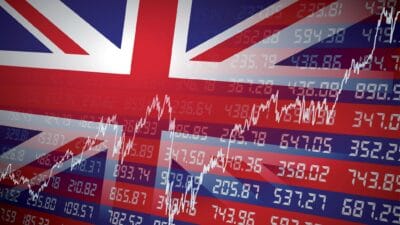 The forward price-to-earnings (P/E) ratio — share price divided by the consensus of analysts’ forecasts for earnings per share (EPS) — is probably the single most popular valuation measure used by investors.
The forward price-to-earnings (P/E) ratio — share price divided by the consensus of analysts’ forecasts for earnings per share (EPS) — is probably the single most popular valuation measure used by investors.
However, it can pay to look beyond the consensus to the spread between the most bullish and bearish EPS forecasts. The table below shows the effect of different spreads on a company with a consensus P/E of 14 (the long-term FTSE 100 average).
| EPS spread | Bull extreme P/E |
Consensus P/E |
Bear extreme P/E |
|---|---|---|---|
| Narrow 10% (+ and – 5%) | 13.3 | 14.0 | 14.7 |
| Average 40% (+ and – 20%) | 11.7 | 14.0 | 17.5 |
| Wide 100% (+ and – 50%) | 9.3 | 14.0 | 28.0 |
In the case of the narrow spread, you probably wouldn’t be too unhappy if the bear analyst’s EPS forecast panned out, and you found you’d bought on a P/E of 14.7, rather than the consensus 14. But how about if the bear analyst was on the button in the case of the wide spread? Not so happy, I’d imagine!
Should you invest £1,000 in Aviva right now?
When investing expert Mark Rogers has a stock tip, it can pay to listen. After all, the flagship Motley Fool Share Advisor newsletter he has run for nearly a decade has provided thousands of paying members with top stock recommendations from the UK and US markets. And right now, Mark thinks there are 6 standout stocks that investors should consider buying. Want to see if Aviva made the list?
Aviva
Today, I’m analysing palindromic insurer Aviva (LSE: AV) (NYSE: AV.US), the data for which is summarised in the table below.
| Share price 519p | Forecast EPS |
+/- consensus |
P/E |
|---|---|---|---|
| Consensus | 46.9p | n/a | 11.1 |
| Bull extreme | 52.3p | +12% | 9.9 |
| Bear extreme | 43.1p | -8% | 12.0 |
I was quite surprised to find that, with the most bullish EPS forecast 12% higher than the consensus, and the most bearish 8% lower, Aviva’s 20% spread is half as narrow as the 40% spread of the average blue-chip company.
Surprised because we’re not only talking about a financial firm here, but also one in the midst of a turnaround. Lloyds, for example, has a 54% spread, yet City analysts see plausible earnings scenarios for Aviva in around as narrow a range as such defensive stalwarts as drinks group Diageo (23%) and pharma firm GlaxoSmithKline (17%).
Mark Wilson, something of a turnaround specialist, joined Aviva as chief executive at the start of 2013. He’s steadied the ship, delivered his targets, and a bit faster than anticipated. The analysts appear to trust him as a safe pair of hands, and to be taking company guidance on 2014 as broadly reliable.
However, the market continues to be a little cautious on financials in general; and Aviva is no exception. The price-to-earnings (P/E) ratio is a modest 11.1 based on the analyst consensus, while the bull extreme gives a reading just into value territory at below 10. Even on the most bearish forecast, Aviva is trading on a P/E of 12 — comfortably below the FTSE 100 long-term average of 14.
As such, I reckon the risk-reward balance is tipped towards reward for far-sighted investors.







